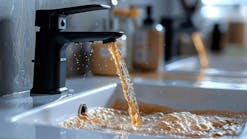Virginia Graeme Baker Act Introduces Swimming Pool Measures
Theresa Bellish is senior managing director, global commercial water division, for NSF International. Bellish can be reached at [email protected].
By the end of this year the latest updates to the life-saving Virginia Graeme Baker Pool and Spa Safety Act (VGBA) will be in full effect, mandating new testing to bolster the law that was born out of a 2002 tragedy. Named for the seven-year-old girl who drowned after she became trapped under water by a hot tub drain, the law requires certified suctions, drains, fittings and other components to be used at public swimming pools and spas. Since the act went into effect in 2008, there have been no reported fatalities involving a child being entrapped on a suction outlet cover in a public pool or spa, according to the U.S. Consumer Product Safety Commission (CPSC).
The VGBA imposes federal requirements for suction entrapment avoidance by requiring product compliance to the criteria detailed in ANSI/APSP/ICC-16, the American National Standard for Suction Outlet Fitting Assemblies (SOFA) for Use in Pools, Spas and Hot Tubs.
With more than 300 million visits to recreational water sites each year and more than 300,000 pools and other types of aquatic venues in the U.S. — according to the Pool and Hot Tub Alliance — swimming is one of the most popular recreational activities. It is critical to develop and adhere to the highest safety standards to protect children and adults alike.
Stricter Testing Requirements for Pool Safety Products
In May 2019, the Consumer Product Safety Commission adopted into the VGBA important revisions to ANSI/APSP/ICC-16 that require stricter testing requirements for specific pool safety products. An 18-month compliance period ends Nov. 24, 2020. Compliance means that new production of pool products must meet the standard’s new requirements, even if the design prior to this date has not changed. Products certified by NSF International have the same deadline in order to maintain certification.
Updates include changes to the testing method, new testing measures and label specifications, and other new requirements. Physical test changes related to hair entrapment testing and the configurations and dimensions of suction heads, sumps and pipes are all designed to maintain or increase safety. In the past, there has been no requirement to test every suction outlet fitting assembly.
According to a 2019 Circulation/Suction Entrapment Incident report by the CPSC, hair entrapments were the most frequently reported type of entrapment incident between 2014 and 2018 at pools, spas and whirlpool bathtubs.
Some of the new procedures for testing mannequin’s hair address hair length, hair preparation before and between each test, and specifics on the hair wave approach time (reducing the time from 60 seconds to 30 seconds) as well as the continuous sweeping motion of the hair. Other hair testing updates relate to water depth.
Requirements also call for new tolerances for the mannequin’s head circumference, length and width, as well as a change in the buoyancy specification—from “neutral” without a tolerance specification, to 1 to 2 pounds negative buoyancy.
One section requires cover/grate manufacturers to specify the sump dimension to be used during hair testing. Manufacturers can permit installation with a greater sump depth but not a lesser depth. When a cover/grate is specified for use on multiple pipe sizes, the hair test must be conducted with each specified size.
New body entrapment test procedures are also detailed and address flow rate, applied force and mechanical removal of the body blocking element from the cover/grate.
Additionally, among a number of other new requirements are specifications about the flow path zone for each suction outlet fitting assembly model, sharp edges on equipment, crack detection, blockable and unblockable designations for products and the removal force limits for both.
Increased Responsibility for Manufacturers
These changes place a heavier burden on manufacturers because they increase the number of tests that need to be performed. The CPSC notes, however, that many of these additional tests may be offset by other changes in the requirements. For example, if hair cannot reach a suction outlet then there is no testing requirement for that specific outlet. Also, testing is not required if the flow path length from the drain cover to the suction outlet is less than 16 inches. Furthermore, the hair wave test requirement time was reduced from 60 seconds to 30 seconds.
Ultimately, all changes are made in the public interest, with the goal of saving lives and preventing injury.
“The requirement in APSP-16 2017 to test at every suction outlet reachable by the hair test specimen will increase the safety of bathers because it precludes the chance of a SOFA being installed in a manner that is different from the way it was tested, serves to clarify the prior practice, and is supported by laboratory testing,” writes the CPSC in the Federal Register.
NSF International is committed to all aspects of recreational water safety and has played an important role in developing ANSI/APSP/ICC-16 and promoting the VGBA, as well as swimming pool codes such as the Model Aquatic Health Code, which provide state and local agencies with wording for the design, construction, operation, maintenance, policies and management of public pools, spas and other water recreation facilities.
NSF’s Kevin Schaefer participated as an ANSI/APSP/ICC-16 writing committee member, and Sung Choe discussed at the World Aquatic Health Conference pool show in October 2019 how variations in test methods can have significant impacts on the results.
Each item addressed in the standard has been carefully considered and implemented to promote the safe use of swimming pools, hot tubs and spas, and to protect the hundreds of millions of people who use them each year. These new mandates to ANSI/APSP/ICC-16 and the VGBA mean that pools and spas will meet the highest safety standards to better protect swimmers of all ages.



